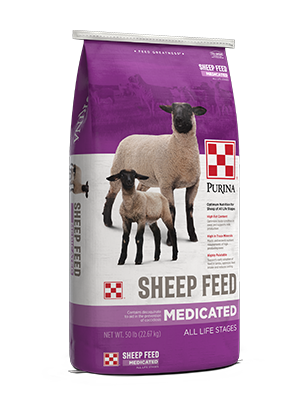
Sheep Nutrition is Key to Less Mastitis in Ewes
Wellness : Health
Wellness : Nutrition

Proper sheep nutrition during dry off can reduce mastitis and improve longevity for ewes.
Lambs get 100% of their nutrition from ewes’ milk during the first eight weeks of life, so it’s vital to maintain udder health. On top of that, weaning occurs shortly after peak milk production for the ewe – making the risk for mastitis in ewes high. An easy way to proactively manage udder health and mastitis is through nutrition.
Managing mastitis via nutrition and management are simple ways to keep mastitis in check and ewes and lambs thriving through weaning and beyond. Heading off mastitis can help reduce long-term udder quality issues and maintain future milk production – and keep ewes in the flock longer.
Follow these tips to reduce the risk of mastitis and maintain ewe and lamb health:
Slow down milk supply
One of the best ways to avoid mastitis in ewes is by gradually slowing down milk production leading up to weaning.There’s a higher risk of mastitis, hard bag and other issues if milk production is still high at weaning. The goal is to reduce energy in the diet and slow down milk production before removing lambs.
At peak production, typically 5-8 weeks after lambing, ewes are commonly fed a high-energy, corn-based ration and high-quality hay to maximize milk production and lamb growth. At the eight-week mark, while lambs are still on the ewes, start a 10-14 day dry-off period. During this timeframe, gradually remove grain and switch to grass hay to lower energy levels in the diet and reduce milk production while keeping ewes full.
Reduce water availability for ewes 24-hours after weaning to further decrease milk production, but don’t eliminate water access, especially during warm weather.
Let ewes lead the way
One of the biggest mistakes made with mastitis management is weaning lambs too early – before milk production has sufficiently decreased.If ewes are still producing high volumes of milk at eight weeks post lambing, even after changing to a low-energy diet, wait to remove lambs. Watch ewes closely to monitor milk production and wait to wean until milk production has slowed to protect udder health and limit mastitis risk.
Operations with ewes and lambs on pasture throughout lactation typically see ewes wean lambs around six months old. Mastitis isn’t common because ewes gradually dry up themselves.
Prepare ewes for the next phase
With so much excitement around weaning, it’s easy to get caught up in the moment and not look ahead to the next phase of life for the ewe. But, it’s a phase to monitor and manage closely – especially with breeding season on the horizon.Ewes coming into lambing with an acceptable level of body condition – a body condition score 3 on a 5-point scale – are in a better position to rebound quickly after weaning. But don’t wait until flushing begins to start getting ewes back in the correct body condition.
Start feeding Purina® Wind and Rain® Sheep Mineral designed for consistent intake once ewes are dry and moved out to pasture – no more than two weeks after weaning. Adding a mineral to the diet helps get ewes back in shape quickly so they’re ready for breeding season.
Mineral alone won’t get them back into shape prior to breeding season. To keep ewes in a body condition score 3, feed Purina® Accuration® Sheep & Goat Hi-Fat Block along with Wind and Rain® Sheep Mineral after weaning.
Drying up ewes with a proper nutrition and management strategy can increase their longevity in the flock.
Does your sheep nutrition program stack up? Find out with a Proof Pays trial.




